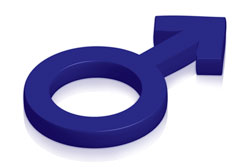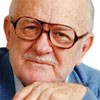- What is testosterone?
- Testosterone production and use
- Functions of testosterone
- Underlying causes of testosterone imbalance
- Testosterone imbalance: side effects and symptoms
What is testosterone?

Testosterone production and use
The way the body produces, distributes and utilises testosterone varies between men and women.

Testosterone production increases exponentially (approximately 18-fold) during puberty. Following puberty, the interstitial cells typically produce testosterone continually. About 6mg of testosterone is produced each day.
However, testosterone production may be disrupted by and decline in response to chronic (obesity) or transient health conditions. In addition, men with a condition called hypogonadism fail to produce testosterone either because the pituitary or hypothalamus glands in the brain which produce the hormones that stimulate testosterone production are dysfunctional, or because the testes are dysfunctional. Testosterone production also declines with age, and on average men experience a 1% per annum decline in testosterone production once they reach 40 years.
More information on Male Menopause
Most of the testosterone which the testes produce is not used by the body. It is inactivated by the liver and excreted through the kidneys. A small proportion (approximately 4%) of the testosterone remains in the man’s blood and is converted into active forms of testosterone which can bind to other molecules in the blood or be used by cells in the man’s body. This can be utilised by cells in the body with androgen receptor sites (sites which receive hormones from the androgen group, most prominently testosterone) including hair follicles cells, bone cells and cells of the seminiferous tubules of the testes where sperm is produced.
Most of the testosterone which remains in a man’s blood binds to other molecules in the blood. Some 44% of the testosterone binds tightly to a carrier-protein (a protein molecule which binds to other molecules and transports them in the blood) called sex hormone binding globulin (SHBG). Because the testosterone is tightly bound, it cannot separate from SHBG and bind with other molecules, and is therefore not available for use by cells in the man’s body. The portion of testosterone tightly bound to SHBG is called biologically inactive testosterone.
A further 54% of testosterone is a man’s blood binds loosely to a second carrier protein called albumin. As the testosterone binds loosely to albumin, it can separate from this protein and bind to other molecules in the blood, or be used by cells in the man’s body. Loosely bound testosterone is considered bio-available, meaning that it is available for use by cells in the man’s body.
The remaining 2% of testosterone in a man’s blood does not bind to other molecules. This unbound portion is known as free testosterone and is also considered bio-available.
Chronic health conditions (e.g. diabetes) and ageing may alter the relative concentrations of SHBG-bound, albumin-bound and free testosterone in a man’s blood. For example, the proportion of testosterone which is bio-available declines more rapidly as a man ages (at an annual rate of 2-3%) than the overall decline in testosterone production (which occurs at an annual rate of about 1%). The relatively large reduction in bio-available testosterone occurs because ageing men produce greater quantities of SHBG which binds tightly to testosterone making it biologically unavailable or inactive.

Women produce much smaller quantities of testosterone than men, but none-the-less it is an important hormone for women. Testosterone is the immediate precursor of oestradiol, which means that when molecules of testosterone in the body break apart to form other hormones or molecules (a process known as biosynthesis), oestrodiol is one of the bi-products. Oestrodiol is a hormone from the group oestrogens. Maintaining adequate testosterone levels is therefore important for maintaining oestrogen production. Oestrogens are the primary female hormones which regulate many reproductive functions including ovulation, and are therefore essential for women’s health and well-being.
Not all testosterone produced by a woman will be converted to oestrogen; a proportion of the testosterone will remain in a woman’s blood and bind to either SHBG or albumin or circulate freely without binding to any other molecule. As with men, testosterone which binds to SHBG is not available for used by the body’s cells, but free and albumin-bound testosterone is bio-available. Bio-available testosterone can be utilised by cells in the body with androgen receptor sites (sites which receive hormones from the androgen group, including and most prominently testosterone). In women androgen receptor sites are found in the tissues of the skin, hair follicles, bone and sebaceous glands (glands in the skin which secrete a fatty substance called sebum).
Low levels of testosterone are present in girls from birth and approximately double during pubertal development. Following puberty and the onset of regular menstrual cycles, women’s testosterone levels fluctuate throughout the menstrual cycle. They begin rising in the first half of the cycle (also known as the follicular phase) and are at their highest for the middle of the menstrual cycle. As with men, testosterone production in women is age dependent and a woman’s testosterone production begins to decline in her 20s and continues until she reaches menopause. By the time a woman reaches her mid-40s, her circulating testosterone levels will be approximately half what they were immediately following puberty.
Get on top of your general health
Find and instantly book affordable GPs within Australia
Functions of testosterone
The function of testosterone varies between men and women.

Primary sex characteristics include:
- Penis and testes size in adult men – testosterone is responsible for developing the male genitals. Men who do not produce enough or any testosterone may maintain child-sized genitals;
- Sperm production – testosterone supports the final stages of sperm production and men who produce inadequate testosterone may be infertile ;
- Libido – testosterone regulates the male sex drive and inadequate testosterone production decreases libido;
- Erectile function – is also influenced by testosterone, which is important for the growth and development of erectile tissues (tissues in the penis which swell with blood in response to sexual stimuli and cause an erection). Testosterone also increases the activity of a molecule called nitric oxide synthase, which regulate the movement of smooth muscles (muscles which expand and contract involuntarily) in the penis. Increased nitric oxide synthase activity increases relaxation of smooth muscles in the penis and improve a man’s ability to achieve and maintain an erection.
Secondary sex characteristics include:
- Hair growth – including the growth of pubic, body and facial hair;
- Deep voice;
- Heavier bones;
- Body composition – greater quantities of testosterone cause men to have a greater proportion of lean body mass and lower proportion of fat compared to women.

Despite the need for further research to determine the exact function of testosterone in women, it is clear that, similar to males, testosterone plays a key role in regulating female sexual function (including sexual desire, arousal and orgasm) and general well-being (e.g. mood). Oestrodiol, (a hormone of the oestrogen group which are the primary female hormones) is a by-product of testosterone metabolism. As oestrogens regulate many female sexual and reproductive functions including menstruation, vaginal lubrication, and possibly sexual arousal, testosterone deficiency in a woman can substantially impact on a woman’s sexual and reproductive functioning.
There is also evidence that testosterone influences female sexual functioning directly (as testosterone, not the testosterone bi-product oestrodiol). Testosterone levels affect the function of many female reproductive organs including the clitoris, uterus, mammary gland, vagina and ovaries. It has been shown that testosterone plays an important role in genital arousal (the process through which the genitals become aroused and is characterised by increasing blood flow to the genitals and in women genital lubrication), which is likely to affect orgasmic ability, as this is dependent on adequate genital arousal.
Although there is clear evidence that many women with low testosterone levels do not experience sexual dysfunction, there is also evidence that testosterone plays a role in regulating female sexual desire and response. For example, studies have correlated low testosterone levels in women with decreased orgasmic ability, sexual pleasure and reduced libido. There is also evidence that women’s response to sexual stimuli (e.g. erotic videos, sexual contact) is increased and that women have sex more frequently, during the mid point of their menstrual cycle, at which time testosterone levels are highest and they are also most fertile. In addition, there is evidence that testosterone levels increase in response to sexual stimuli. For example, a study in which women masturbated to orgasm reported that the women’s testosterone levels increased after orgasm.
Numerous studies have shown improved sexual function as a result of testosterone replacement therapy in post-menopausal women with low testosterone levels. Women who received testosterone replacement after surgically induced menopause by oorphorectomy (removal of both ovaries) which caused testosterone deficiency, reported significantly more frequent sexual intercourse and fantasies and greater orgasmic pleasure than women who did not receive testosterone replacement therapy following oorphorectomy. Women receiving combined oestrogen-androgen replacement or tibolone (a drug which mimics functions of both oestrogen and testosterone) therapy following natural menopause have reported improved sexual function compared to those receiving oestrogen replacement therapy alone.
In women, testosterone is also important for bone mineralisation (the conversion of minerals in the diet to bone matter) and testosterone deficiency is associated with bone conditions including osteopaenia (reduced bone density) and osteoporosis (a condition in which the bones thin and become more vulnerable to fracture).
Underlying causes of testosterone imbalance
Testosterone imbalance is primarily caused by the production of either too much or not enough testosterone. The causes which underlie imbalances in testosterone production vary for men and women.

- Anabolic steroid use;
- Administration of too much exogenous testosterone (testosterone of external origin), for example in testosterone replacement therapy.
Testosterone deficiency is associated with the following conditions:
- Primary hypogonadism – a condition in which testosterone production does not occur due to testicular dysfunction;
- Secondary hypogonadism – a condition in which testosterone is not produced due to a dysfunctional hypothalamus or pituitary gland (the glands in the brain which produce hormones that stimulate testosterone production);
- Obesity – an Australian study found that obese men were almost twice as likely as non-obese men to have severe testosterone deficiency;
- Chronic health conditions including diabetes, metabolic syndrome and cardiovascular disease are all associated with low testosterone levels;
- Human Immunodeficiency Virus; and
- Use of some drugs – particularly chemotherapy drugs used to treat cancer, corticosteroids and alcohol are associated with low testosterone levels.

- Polycystic ovarian syndrome – women with polycystic ovarian syndrome typically have elevated testosterone and other androgen levels.
- Idiopathic hirsutism (excessive hair growth of unknown origin);
- Congenital adrenal hyperplasia (excessive growth of the adrenal gland caused by the growth of excessive normal adrenal cells. Congenital cases are evident at the time of birth);
- Androgen secreting ovarian or adrenal tumours (tumours of the ovaries or adrenal gland which produce and secrete androgen group hormones, of which testosterone is one);
- Administration of exogenous testosterone for example as part of hormone replacement therapy.
Abnormally low testosterone levels may be induced by:
- Oestrogen replacement therapy – as the resulting increase in oestrogen causes an increase in SHBG concentrations. This results in greater quantities of testosterone being tightly bound and biologically unavailable;
- Primary ovarian failure or insufficiency (failure of the ovaries to produce mature eggs or sufficient quantities of such, due to a dysfunction in the ovaries);
- Secondary ovarian failure (failure of the ovaries to produce eggs due to a dysfunction in the pituitary gland, which means the pituitary fails to secrete follicle stimulating hormone, the hormone which stimulates the ovaries to develop mature eggs);
- Hypopituitarism (reduced secretion of hormones from the pituitary gland);
- Dysfunction of the adrenal axis (the axis of hormone secreting glands which are the adrenal glands above the kidneys and the hypothalamus and pituitary glands in the brain);
- Chemotherapy drugs;
- Surgical menopause is associated with a rapid decline in testosterone production and levels. For example, bilateral oorphorectomy (removal of both ovaries) causes a rapid (approximately 50%) decline in testosterone levels. Following surgically induced menopause, a woman’s body continues to produce testosterone from the adrenal glands; and
- Natural menopause – although the decline is gradual and testosterone levels in women begin to decline throughout a woman’s reproductive years, before the onset of menopause.
Testosterone imbalance: side effects and symptoms

- Priapism (persistent erection);
- Sudden cardiac death; and
- Liver disease.
Testosterone deficiency is associated with the following side effects and symptoms:
- Reduced libido;
- Erectile dysfunction, including reduced penile rigidity during erection and erections of shorter duration;
- Oligospermia (low concentration of sperm in the semen) or azoospermia (absence of sperm in the semen);
- Mood swings and irritability;
- Anorexia;
- Depression – a large study reported men with testosterone deficiency were more than four times as likely to have clinically diagnosed depression;
- Lack of energy;
- Reduced cognitive function – for example, poor concentration and greater risk of cognitive disorders including Alzheimer’s disease;
- Joint pains and stiffness;4
- Reduced bone mass which increases the risk of osteoporosis;
- Reduced muscle mass;
- Weight gain;
- Reduced haemoglobin (a protein molecule found in red blood cells); and
- Reduced mortality.

- Loss of bone mineral density (a measure of the density of mineral salts such as calcium carbonate in the bone) in pre and post menopausal women;
- Osteoporosis;
- Increased risk of hip fracture in post-menopausal women;
- Reduced muscle strength in post-menopausal women;
- Height loss in post-menopausal women;
- Reduced lean body mass in post-menopausal women;
- Reduced cognition and memory function;
- Persistent fatigue;
- Reduced motivation;
- Loss of pubic hair;
- Thinning of the vaginal mucosa (the membranes which produce vaginal mucus, including lubrication during sexual activity);
- Reduced sense of well-being;
- Impaired sexual functioning- including:
- Reduced frequency of sexual intercourse;
- Decreased libido;
- Reduced vaginal lubrication;
- Dyspareunia (pain during intercourse);
- Reduced orgasmic ability; and
- Reduced sexual pleasure.
Abnormally high testosterone levels in women may cause the over-development of typically male sex characteristics and may result in:
- Hirsutism (excess hair growth, for example on the face or chest);
- Acne;
- Male balding pattern;
- Clitoromegaly (enlargement of the clitoris); and/or
- Deepening of the voice.
More information
 |
For more information on male testosterone deficiency disorders and replacement therapy treatment, see Testosterone Deficiency. |
References
- Davis, S. Androgen treatment in women. Med J Aust. 1999;170:545-9.
- Marieh, E. Essential of anatomy and physiology. 7th ed. 2003. Pearson Education Inc.
- Allen, C. McLachlan, R. Testosterone deficiency in men: diagnosis and management. Aust Family Phys. 2003;32(6):422-9.
- Berman, J. Physiology of female sexual function and dysfunction. Int J Impotence Res. 2005;17:S44-51.
- Matsumoto, J. Bremner, W. Serum testosterone assays- accuracy matters. J Clin Endocrinol Metab. 2004;89(2):520-4.
- Allen, C. Strauss, B. Burger, H. et al. The association between obesity and the diagnosis of androgen deficiency in symptomatic ageing men. Med J Aust. 2006;185:424-7.
- Shifren, J. The role of androgens in female sexual dysfunction. Mayo Clin Proc. 2004;79 (4 Suppl.) S19-24.
- Traish, A. Kim, N. Min, K. et al. Role of androgens in female genital sexual arousal: receptor expression, structure and function. Fertil Steril. 2004;77(S4):S11-19.
- Margo, M. Winn, R. Testosterone treatments: why, when and how? Am Family Physician. 2006;73(9):1591-9.
- Handelsman, D. Zajac, J. Androgen deficiency and replacement therapy in men. Med J Aust. 2004. 180:529-35.
- Traish, A. Kim, M. The physiological role of androgens in penile erection: regulation of corpus cavernosum structure and function. J Sex Med. 2005;2(6):759-70.
- Bancroft, J. The endocrinology of sexual arousal. J Endocrinol. 2005;185:411-27.
- Davis, S. Davison, S. Donath, S. Bell, J. Circulating androgen levels and self reported sexual function in women. J Am Med Assoc. 2005294:91-6.
- Kaplan, H. Hewitt, T. The female androgen deficiency syndrome. J Sex Marital Ther. 1993;19(1):3-25.
- van Anders, S. Dunn, E. Are gonadal steroids linked with orgasm perceptions and sexual assertiveness in women and men? Hormones & Behaviour. 2009;56(2):206-13.
- Riley, A. Riley, E. Controlled studies on women presenting with sexual drive disorder: 1: Endocrin Status. J Sex Marital Ther. 2000;26(3):269-83.
- Morris, M. Udry, J. Khan-Dawood, F. Dawood, M. Marital sex frequency and mid-cycle female testosterone. Arch Sex Behaviour. 1987;16(1):27-37.
- Exton, M. Bindert, A. Kruger, T. Et al. Cardiovascular and endocrine alterations after masturbation induced orgasm in women. Psychosomatic Med. 1999;61:280-9.
- Shifren, J. Braunstein, G. Simon, J. et al. Transdermal testosterone treatment in women with impaired sexual function after oophorectomy. NEMJ. 2000;343:682-8.
- Modelska, K. Cummings, S. Female sexual dysfunction in postmenopausal women: systematic review of placebo-controlled trials. Am J Obstet Gynecol. 2003;188(1):286-93.
- Bolour, S. Braunstein, G. Tstosterone therapy in women- a review. Int J Impotence Res. 2005;17:399-408.
- Khaw, K. Dowsett, M. Folkerd, E. et al. Endogenous testosterone and mortality due to all causes, cardiovascular disease and cancer in men. Circulation. 2007;116:2694-701.
- Reandron Product Information. Pymble, NSW: Bayer Australia Limited; 21 July 2008.
- Carruthers, M. Time for international action on treating testosterone deficiency syndrome. The Ageing Male. 2009; 12:21-8.
- Margo, K. Winn, R. Testosterone treatments: why, when and how? Am Family Phys. 2006;73(9):1591-8.
- Balen, A. Rutherford, A. Managing anovulatory infertility and polycystic ovarian syndrome. BMJ. 2007;355:663-6.
- Wierman M. Basson R. Davis S. et al. Androgen therapy in women: an Endocrine Society Clinical Practice guideline. J Clin Endocrinol Metab. 2006.;91(10):3697-710.
- Aslan, E. Fynes, M. Female sexual dysfunction. Int Urogynecol J. 2008;19:293-305.
- Shores MM, et al. Increased incidence of diagnosed depressive illness in hypogonadal older men. Arch Gen Psychiatry. 2004;61:162-7.
- Beauchet, O. Testosterone and cognitive function: current clinical evidence of a relationship. Eu J Endocrinol. 2006;155(6):773-87.
- van Geel, T. Geusens, P. Winkens B. et al. Measures of bio-available serum testosterone and oestrodiol and their relationships with muscle mass, muscle strength and bone mineral density in post menopausal women: a cross sectional study. Eu J Endocrinol. 2009;160(4):681-7.
All content and media on the HealthEngine Blog is created and published online for informational purposes only. It is not intended to be a substitute for professional medical advice and should not be relied on as health or personal advice. Always seek the guidance of your doctor or other qualified health professional with any questions you may have regarding your health or a medical condition. Never disregard the advice of a medical professional, or delay in seeking it because of something you have read on this Website. If you think you may have a medical emergency, call your doctor, go to the nearest hospital emergency department, or call the emergency services immediately.







